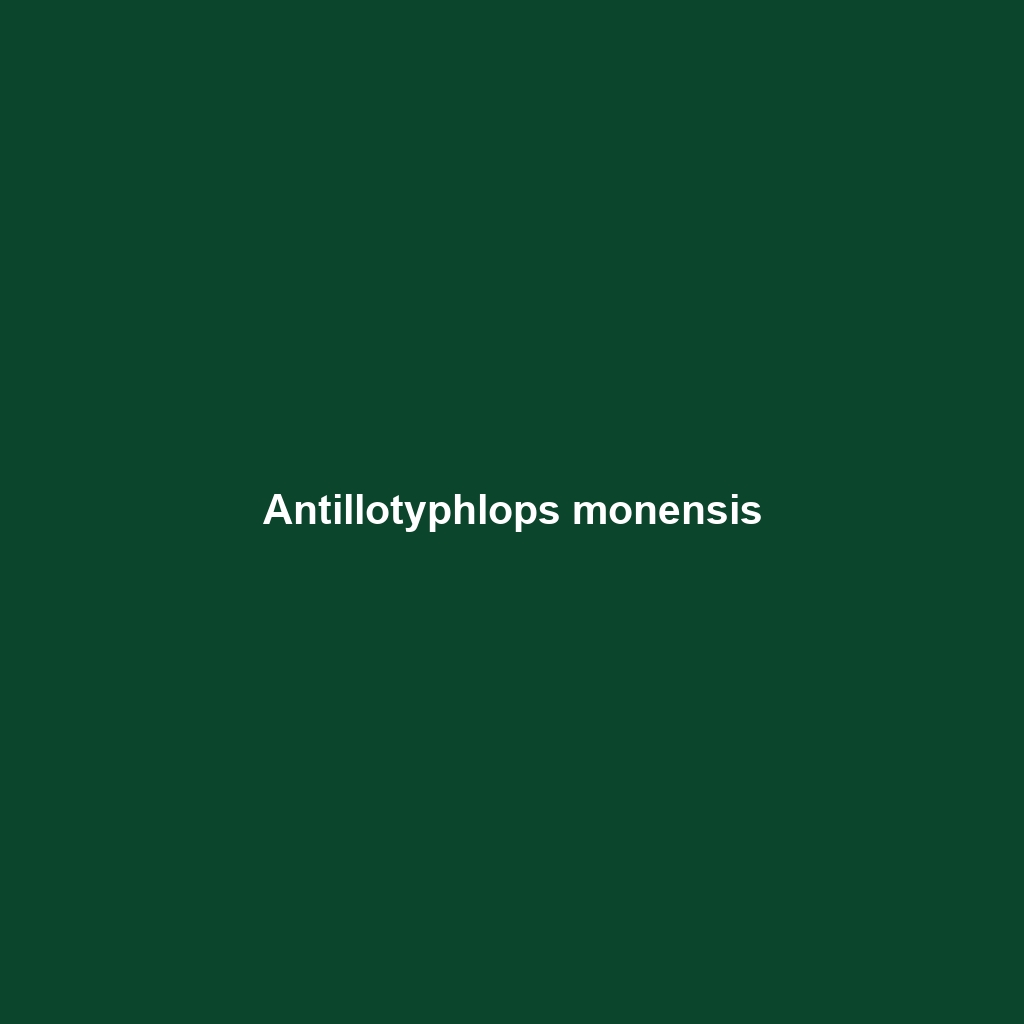Species Description: Antillotyphlops naugus
Common Name: Antillotyphlops naugus
Scientific Name: Antillotyphlops naugus
Habitat
Antillotyphlops naugus, commonly known as the Antillean blind snake, is primarily found in the Caribbean islands, particularly in Puerto Rico and the Virgin Islands. It inhabits a variety of environments including tropical forests, gardens, and urban areas, often residing in loose, moist soil that allows easy burrowing.
Physical Characteristics
This species typically reaches lengths of 20 to 40 cm (8 to 16 inches). Its slender, elongated body is covered with smooth, shiny scales that vary in color from light brown to dark brown, often with a hint of pink. Notable features include its small, non-functional eyes, which are barely visible beneath the scales, and a pointed snout, adapted for burrowing.
Behavior
Antillotyphlops naugus exhibits a mostly burrowing behavior, spending a significant amount of its life underground to avoid predators and extreme weather. This secretive snake is predominantly nocturnal, foraging for food during the night. Its movement is slow and deliberate, making it adept at navigating soil and leaf litter.
Diet
The diet of Antillotyphlops naugus primarily consists of small invertebrates, such as ants and termites. This snake plays a crucial role in controlling the populations of these creatures within its habitat. Its feeding habits highlight its specialization in consuming soft-bodied prey, which it locates using its keen sense of smell.
Reproduction
Antillotyphlops naugus reproduces through egg-laying. The breeding season typically occurs during the warmer months, with females laying clutches of up to 5 eggs. Notable reproductive behaviors include nest-building, where females may create burrows to protect their eggs until hatching, usually taking place around two months after laying.
Conservation Status
The current conservation status of Antillotyphlops naugus is classified as Not Evaluated by the IUCN Red List. However, habitat destruction and environmental changes pose potential threats that could impact its population numbers, emphasizing the importance of monitoring its status.
Interesting Facts
One fascinating fact about Antillotyphlops naugus is that it is one of the few snake species that exhibit a fossorial lifestyle—living predominantly underground. Its adaptations allow it to thrive in environments where many other reptiles cannot, making it a unique specimen in the study of Caribbean biodiversity.
Role in Ecosystem
Antillotyphlops naugus plays an important role in its ecosystem by helping to maintain the balance of insect populations. As a predator of ants and termites, this snake contributes to the health of its environment by regulating these species, which can otherwise become overly abundant.

